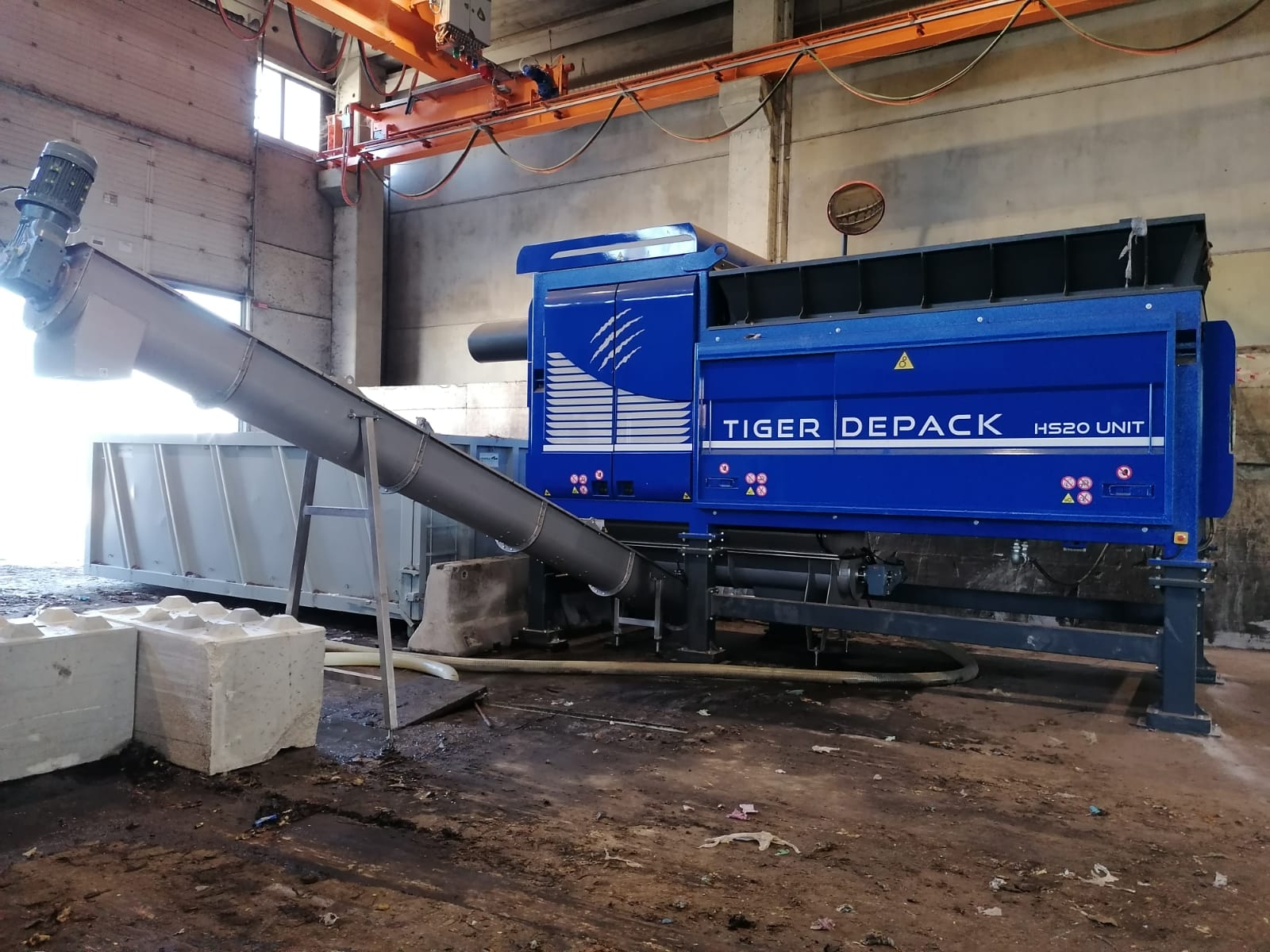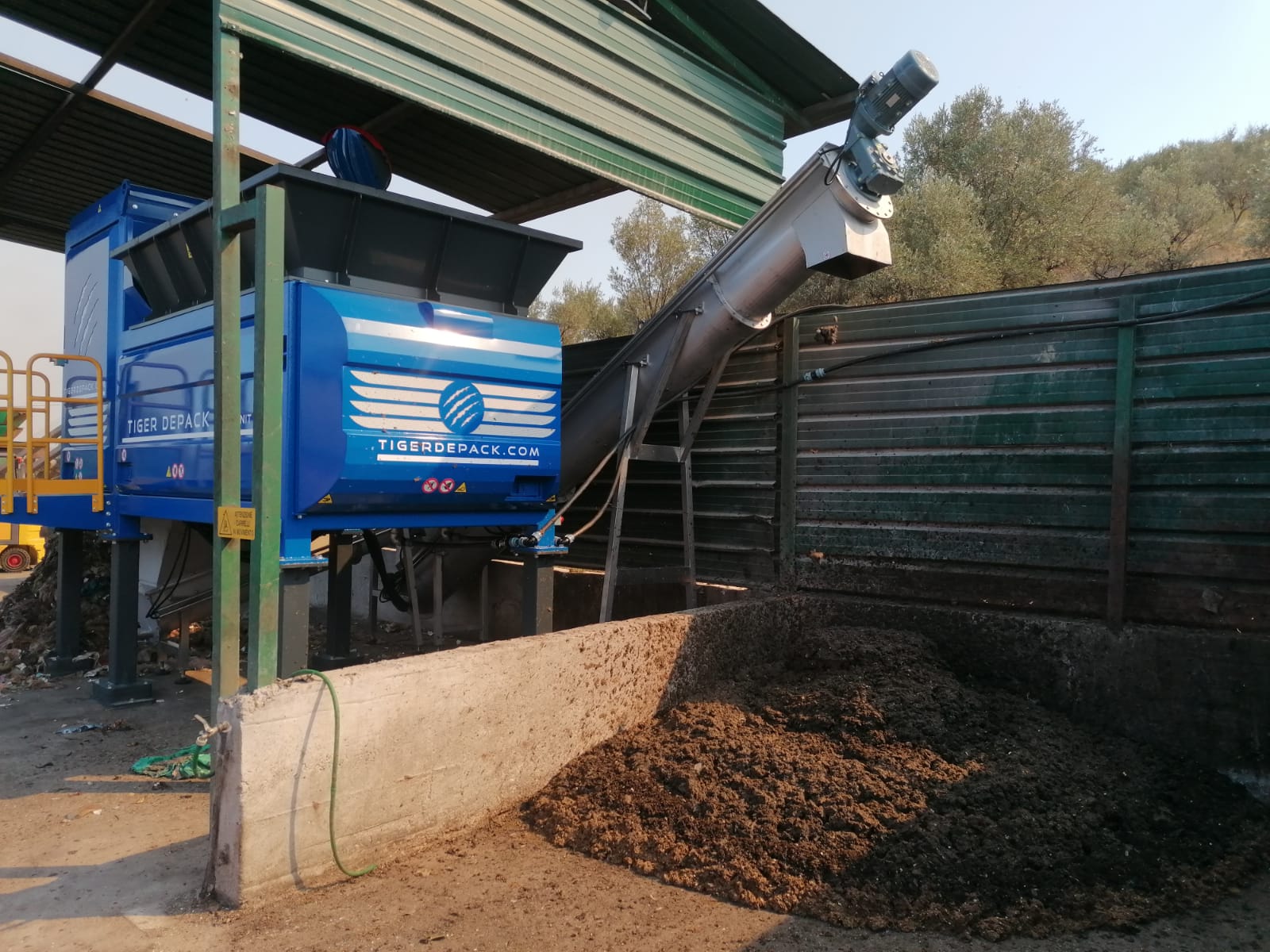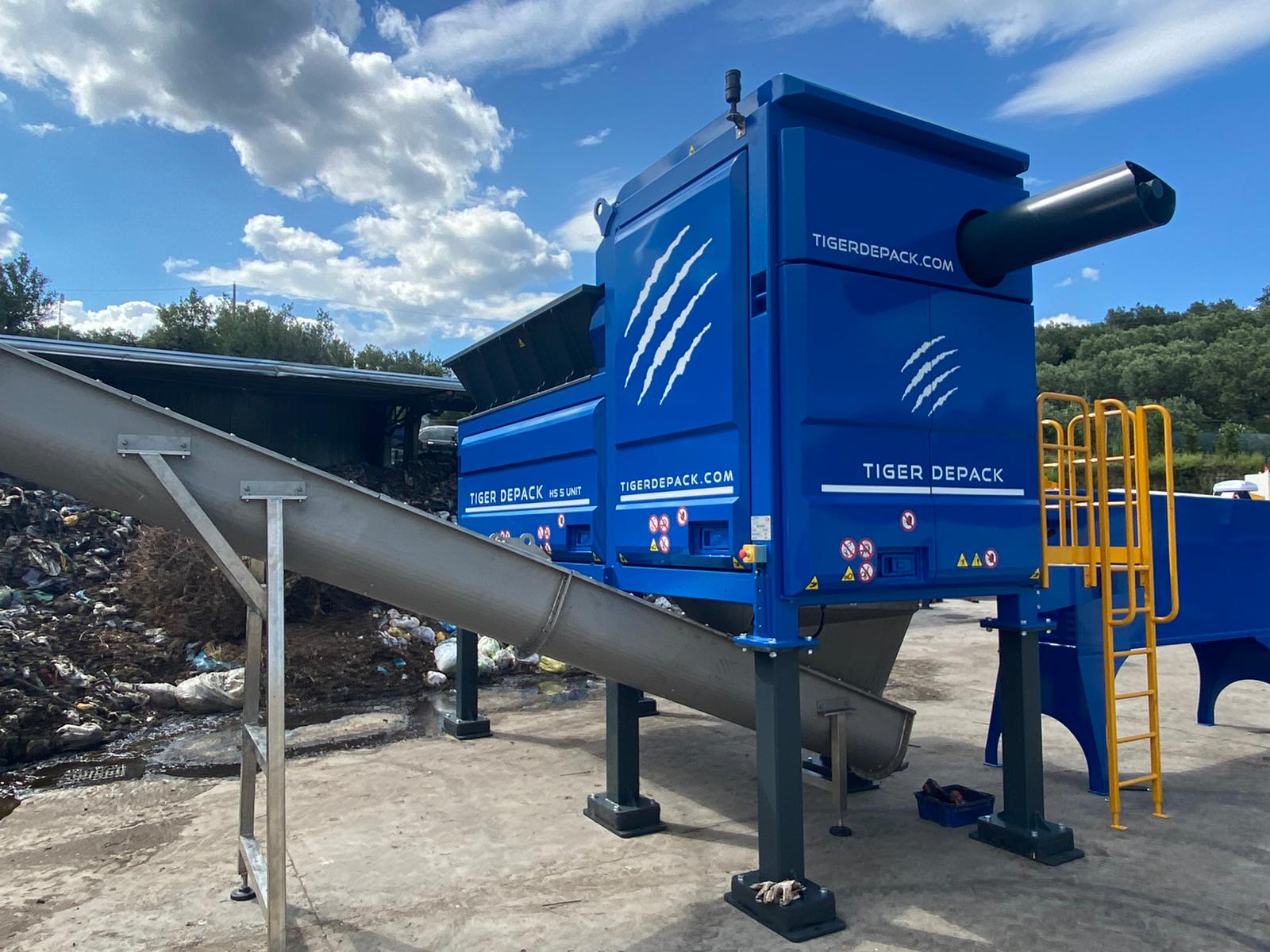Tiger Depack: the all in one solution for the treatment of the organic fraction
Tiger Depack: the all in one solution for the treatment of the organic fraction

Tiger Depack has been developing technical solutions to improve waste recovery for ten years.
Food waste, production waste and scraps from waste treatment processes are just a few examples of the main matrices valued by Tiger Depack packagers.
Thanks to the great reliability of the machinery and the in-depth study of the types of matrices to be recovered, the Tiger de-packagers allow a significant reduction in disposal costs in compliance with environmental regulations issued locally and globally.
Tiger Depack's goal is to fill a technological gap in the recovery of the organic matrix. The first de-packager (produced twelve years ago) was able to recover up to 98% of the organic content, had a footprint of 20 square meters and processed up to 15 tons per hour of waste.
A single step for a great result.
The Tiger Depack product line consists of 3 main de-packager models: HS20, HS10 and HS5.
Tiger HS20 and Tiger HS10 are, respectively, the production units of 20 and 10 tons per hour and their size is very similar: 20 square meters for HS20 and 18 square meters for HS10.
The different hourly flow rates allow the HS20 to treat from 20,000 to 60,000 tons per year while the HS10 is suitable for quantities from 10,000 to 30,000 tons per year.
The Tiger HS5 unit is the smallest size de-packager: 12 square meters of occupied surface and a capacity from 5,000 to 10,000 tons per year.
This model has been dedicated to specific installations with limited space.
Pre-treatment of the organic matrix
Waste treated in PRE-TREATMENT, DRY ANAEROBIC DIGESTION AND COMPOSTING PROCESSES are generally organic and food waste, initially separated,which are fed directly into Tiger's de-packagers.
The processes, in this case, are a pre-treatment because the Tiger units prepare the incoming waste to be optimized.
Anaerobic or dry composting processes require pre-treatment to remove packaging and, although no liquid is required by Tiger units, a percentage of leachate or liquid is added as an inoculum.
In this way the Tiger de-packagers work dry, reducing the solid substance from 30% -35% to 30% -27%
In the case of ANAEROBIC DIGESTION with WET technology, the treated waste and the process carried out have the same characteristics as above (Composting / DryAD), what changes is the working method. The process is wet and consequently the density of the organic output is reduced from the starting solid substance by 30% -35% to the request of 5% -10%.
In wet anaerobic digestion plants, process water (inoculum or leachate) are added to reach the density required by the digester operation or to accelerate biological degradation.
Tiger's de-packagers are equipped with a liquid supply line and with a counter digitally connected with Tiger Software.
Examples of organic waste are BIOWASTE, FOOD WASTE, EXPIRED FOODS.
Mass performance is UP TO 95% OF THE CONTENT RECOVERY (organic).
The economic performance is UP TO 90% OF THE REDUCTION OF DISPOSAL COSTS
Cleaning of plastics
Plastic waste are among the waste produced in greater quantities by organic waste treatment plants.
Their recovery is a specific process that involves the inclusion of the Tiger HS20 OSC in existing pre-treatment lines and in which Tiger's de-packagers are used for the recovery of the organic matter that remains in the waste produced.
The recovery of organic matter from this matrix allows a mass or energy valorization depending on whether the process is composting or anaerobic digestion.
The composition of the waste, in this case, is the pretreatment scrap, a set of plastic waste in which there is still an important amount of organic.
Mass performance is UP TO 95% OF CONTENT RECOVERY.
The economic performance is UP TO 70% OF THE REDUCTION OF DISPOSAL COSTS.
Let's think, for example, of a BIOWASTE pre-treatment line that produces a quantity of scrap equal to 25% -30% of weight of the incoming material.
This percentage is significant in economic terms but, from the operational point of view, for a matrix of this type it is complicated and expensive to find disposal plants ready to collect it.
With the intervention of the Tiger HS20 OSC de-packager, the quality of the scraps is improved and their weight is considerably reduced.
On a pre-treatment line that generates an amount of waste between 25% -30%, Tiger Depack's HS 20 OSC further lowers this percentage to 5% -10% reducing operating costs. Another important advantage is its small size that allows it to be inserted even in plants that have already started up.
Tiger Depack HS 20 - Dry Anaerobic Digestion Plant and Composting Plant - Bioenergy Trentino TN
Tiger Depack HS 20 OSC Oversize Cleaning was inserted after the construction and sturt up of the system. It is now positioned in the pre-treatment section (POS.2 fig.xx)
The primary shredder and the star screen preceding the Tiger HS20 OSC unit produce the two outgoing flows: under screen (for the dry digester) and over screen (for the Tiger HS20 OSC).
The Tiger HS20 OSC is powered by 8 tons per hour of over-range, packaging flow and unwanted materials, which have an organic content between 50% and 60% of the total dry weight.
The material processed by the TIGER HS20 OSC is separated through a patented vertical centrifugation process.
The two matrices obtained are the light one (mainly packaging) and the heavy one (mostly organic).
The heavy fraction, loaded on the same digester feeding belt (NT03 figxx), has a plastic percentage lower than 0.5% .
The anaerobic treatment now recovers energy from the organic matrix outcoming from the Tiger HS20 OSC while the subsequent composting achieves the recovery of matter.
After the treatment the light fraction has a percentage of organic substance equal to 5-6% on the dry weight with a recovery therefore of about 90%.
This substance is the new waste produced by the plant and is deposited in a special section of the pit. It is a material composed of clean plastic, without organic residues, dry, light, easier and cheaper to dispose of in landfills or waste-to-energy.
With the insertion of TIGER HS20 OSC, the weight of the waste produced by the pre-treatment section of the plant has been reduced by more than 50% by a single step.
Tiger Depack HS20 - Hera Ambiente – Sant’agata Bolognese dry anaerobic digestion and composting plant
Cesaro Mac Import has refined the pre-treatment phase of the anaerobic digestion system of the new Hera plant with its Tiger Depack system for the treatment of processing scraps.
In particular, Cesaro Mac Import installed the HS 20 OSC model to recover fractions of material otherwise intended for landfill.
Tiger Depack extracts the organic fraction still contained in processing scraps, the 90% of the total weight, by a meticulous cleaning of the plastic material which consequently reaches the 10% of the treated scrap.
The Tiger Depack System, carefully designed, tested on site, improved over years of work and patented by Cesaro Mac Import itself, allows to reduce the material sent to landfill (and the related transport and disposal costs) and to recover the stabilised organic fraction so ready for composting or anaerobic digestion. Tiger Depack HS 20 OSC recovers almost 100% of the organic still trapped in the plastic bags.
The special technology cleans the residual plastic from the organic fraction of municipal solid waste (OFMSW) by extracting a homegeneus organic matrix of a size suitable for dry anaerobic digestion.
This happens in Sant'Agata Bolognese.
Credit by Andrea Piccioni (product Manager Tiger Depack)
Tigerdepack.com

Follow us on Social and update with all Tiger Depack News!


